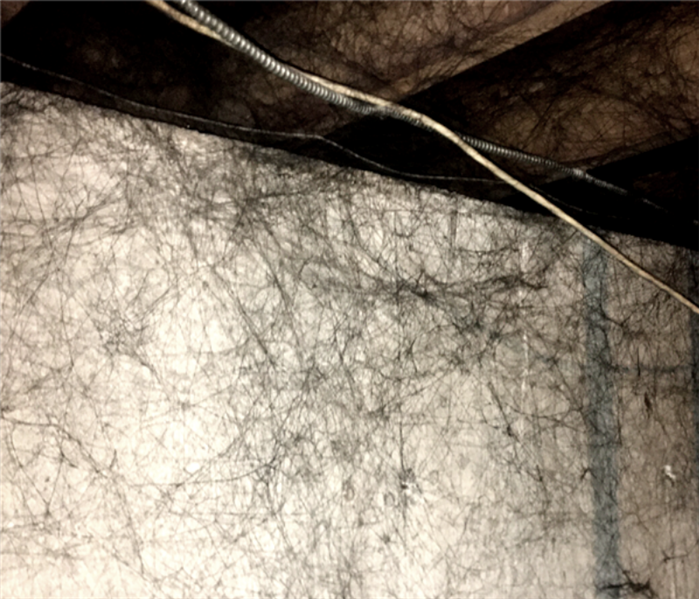What Are Soot Webs and What Causes Them?
3/23/2021 (Permalink)
 While soot webs, or soot tags, look like smoke-covered spiderwebs, they're actually a whole new structure formed by soot and smoke particles.
While soot webs, or soot tags, look like smoke-covered spiderwebs, they're actually a whole new structure formed by soot and smoke particles.
As fire damage restoration specialists with over 15 years of experience, we've seen many different types of house fires in New Jersey. One of the most notable phenomena of soot and smoke damage are the distinct 'soot webs' that are left behind, which closely resemble large black cobwebs.
Here, we will review the cause of 'soot webs' or the more accurate name, 'soot tags' after a house fire.
What Are Soot Webs?
After a fire, smoke and soot particles deposit themselves around your home on walls and ceilings. In many cases, homeowners report large spider webs covered in black smoke and soot, and is what we refer to as the 'soot web' or more accurately, 'soot tag'.
What's most interesting about this phenomenon is that it's not caused by spider webs being covered with soot. When black spiderwebs suddenly show up all around your home that you keep clean and tidy after a fire - don't worry! You're not actually dealing with soot-covered cobwebs, or 'fire-spiders' as some homeowners say.
The Actual Cause of Soot Webs
When there's a fire in your home, the heat of it moves towards the cooler areas of your property as air seeks to create temperature equilibrium. This causes smoke and soot particles to be easily spread to parts of your home that were far away from the fire, even when your HVAC system is turned off.
When smoke and soot particles reach cooler areas of your home with low circulation such as basements or the corners of walls and ceilings, they become more concentrated. This is because they are no longer constantly moving.
Due to the fact that smoke and soot particles are charged from combustion, it attracts the particles to each other. When smoke and soot particles settle and come together, they create long chains of soot, technically called soot tags.
In the end, what seems like black soot and smoke depositing on a pre-existing fire web is actually a completely new structure formed only by charged soot and smoke particles.
Soot Tags Can Occur After:
- House fires
- Using low-grade candles that have a high rate of incomplete combustion
- Furnace puffbacks
Can You Clean Up Soot Tags Yourself?
While it's possible to clean soot tags by yourself, like other types of fire damages, we don't recommend doing the cleanup yourself.
This is because improper cleaning of smoke and soot can actually make the damage worse. Cleaning walls or ceilings with the incorrect solutions or equipment can embed particles further into the walls, making it harder for professionals to clean. Improper cleaning can also lead to lingering, unwanted smoke odors in your home.
It's best to call a local fire and smoke damage restoration company in New Jersey to handle cleaning soot webs after a fire in your home.


 24/7 Emergency Service
24/7 Emergency Service